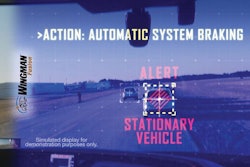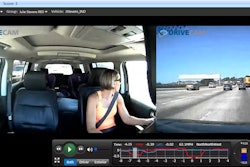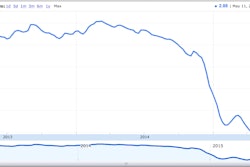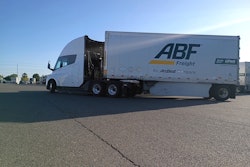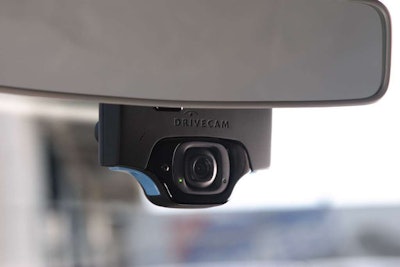 Lytx’s DriveCam system is one of several onboard video systems available.
Lytx’s DriveCam system is one of several onboard video systems available.The National Transportation Safety Board recently released a report pushing the benefits of onboard video systems for commercial trucks and made recommendations to several organizations to improve the use of the systems.
The in-cab camera systems record driver-facing video and road-facing video either continuously or as the result of a triggering event. NTSB’s report focuses on the benefits offered by these systems for evaluation of both driver and passenger behaviors and collision analysis.
Many commercial vehicles, such as school buses and motorcoaches, are equipped with onboard video systems. After a crash, NTSB uses information from onboard video systems to help determine the probable cause of the crash, to make recommendations to prevent future crashes and to reduce loss of life and injury when crashes do happen.
After reviewing a two recent crash investigations (one involving a school bus and a tractor-trailer in Port St. Lucie, Fla., in 2012, and one involving a motorcoach and a tractor-trailer in Kearney, Neb.), the NTSB made recommendations to the National Highway Traffic Safety Administration, seven transportation-related associations and 15 manufacturers of onboard video systems.
The recommendations to NHTSA are as follows:
•Incorporate into your existing crash database systems, with appropriate access controls, standardized procedures for collecting and using pertinent video recordings, injury information and crash data from video-equipped buses, consistent with privacy regulations and policies.
The recommendations to the seven transportation-related associations are as follows:
•Encourage your members to ensure that any onboard video system in their vehicles provides visibility of the driver and of each occupant seating location, visibility forward of the vehicle, optimized frame rate and low-light recording capability.
The recommendations to the 15 manufacturers of onboard video systems are as follows:
•Develop written guidance for the initial installation and long-term maintenance of onboard video systems, and publish that guidance on your websites and in future owner’s manuals.
To read the full report, click here.




